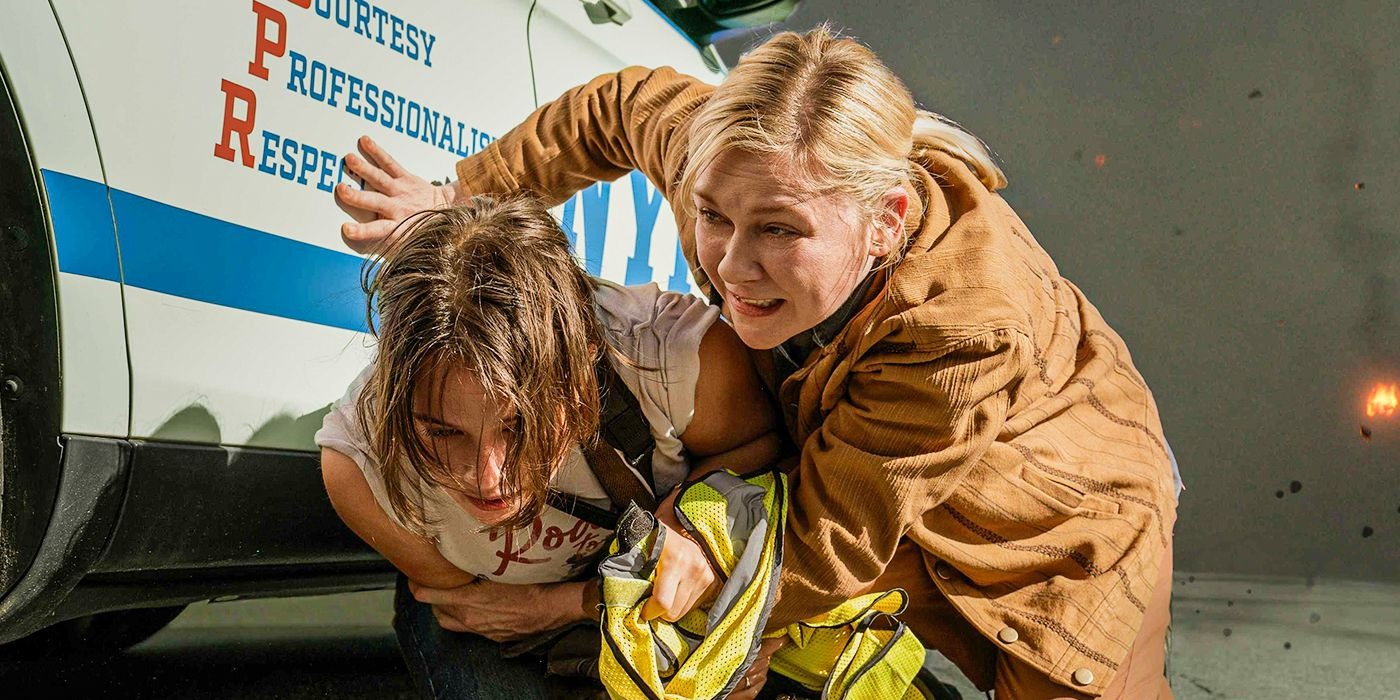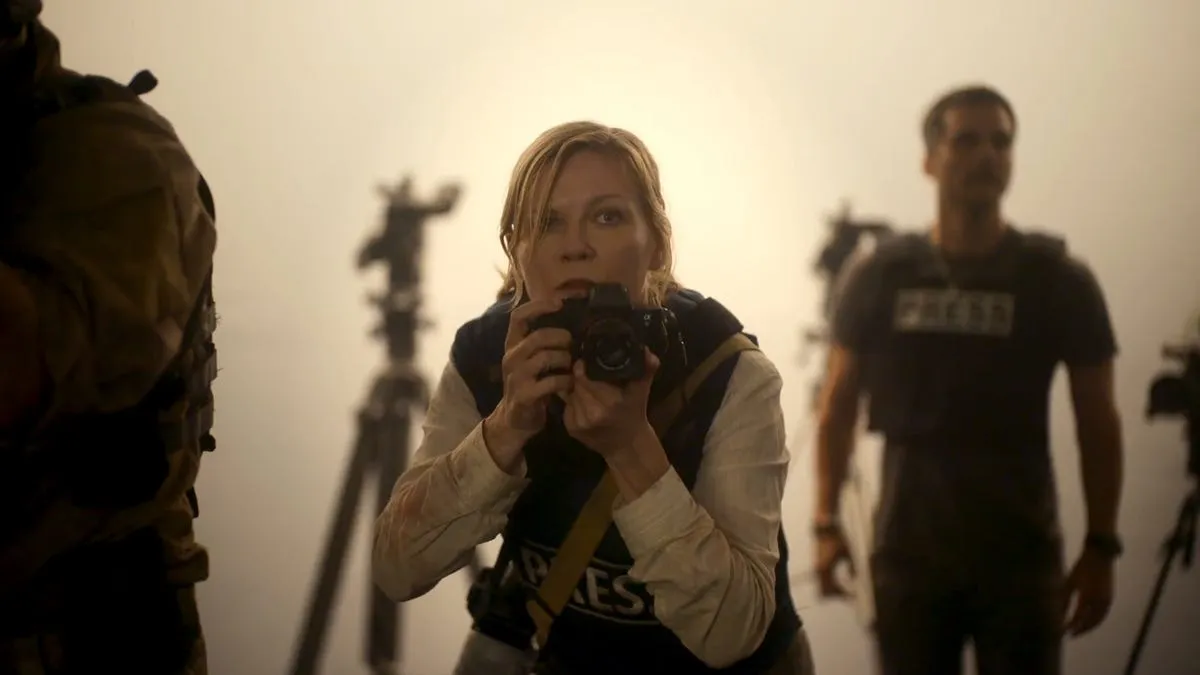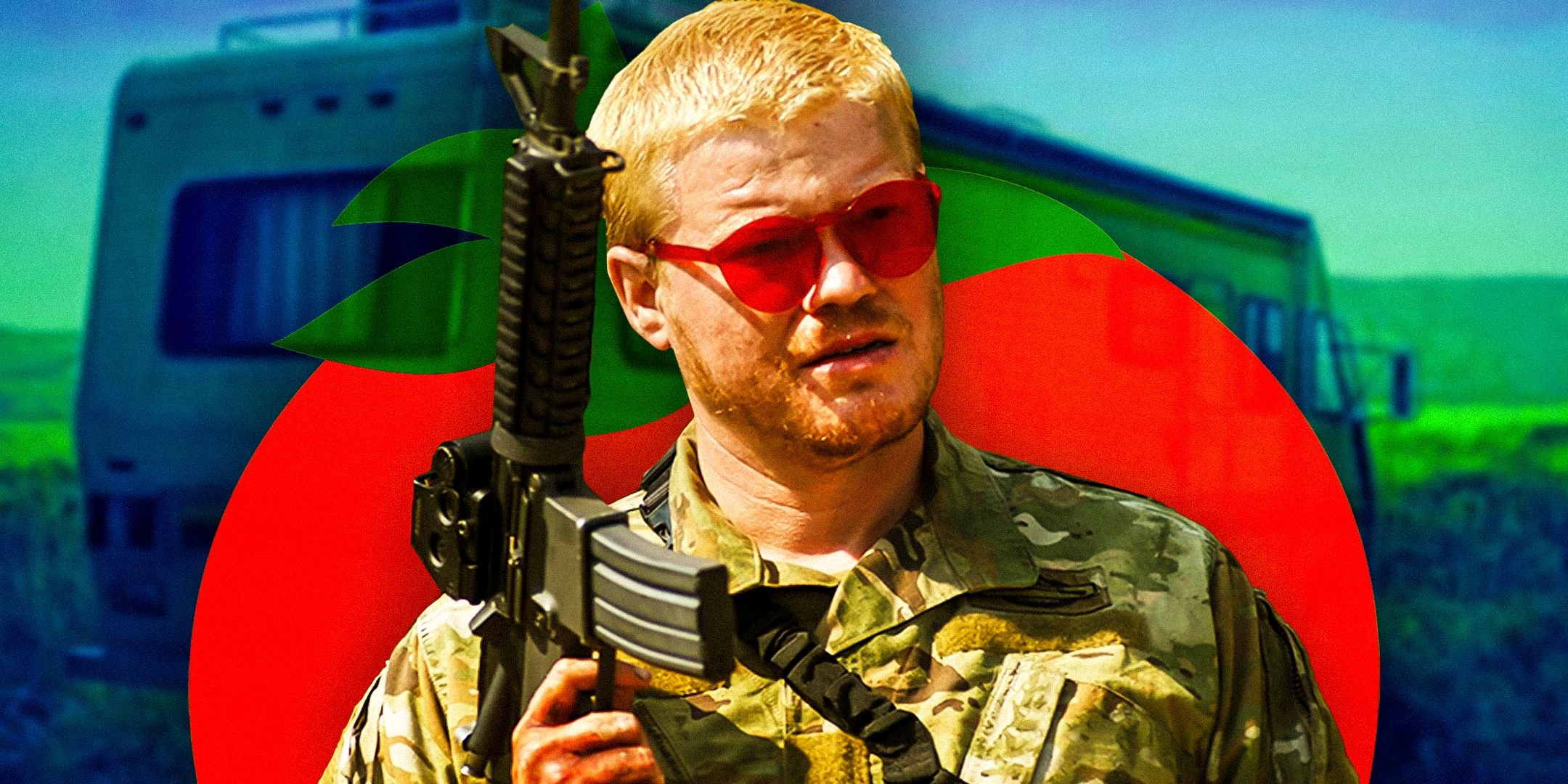If you’re still reading at this point, it likely means you’ve watched all 109 intense minutes of Civil War, the A24 production directed by British filmmaker Alex Garland. The film reflects his view of a broken America that pushed him to write a fictional but unsettling depiction of national collapse.
That brief moment where “GO STEELERS!” is seen on a Pennsylvania bridge leaves one wondering whether football would survive such a conflict. It’s also fair to ask when Jesse Plemons might take a break from his eerie roles and show us his rom-com side—he’s quite likable.

Above all, what stays with many is that conclusion—where a violent military-style invasion of the White House leads to the loss of one of the main characters.
What follows here is a breakdown of how Torrance Shipman, once known as a high school cheerleader in Bring It On, found herself on the frontlines as a photojournalist during America’s imagined second Civil War.
The Political Situation and Missing Details
While watching Civil War, there were moments I felt I may have overlooked a scene where the origins of the war were explained, because the movie doesn’t tell us what kicked it off. Still, there are certain things we can gather or figure out from what is presented:
A total of nineteen states have broken away and are actively fighting the federal government. This group is referred to as the Western Forces and includes both Texas and California—an unusual but effective partnership.
Even though President Nick Offerman’s first appearance suggests diplomacy, this version of the American government has become extremely harsh. Journalists are killed on sight in Washington, D.C., the Western Forces label him a dictator, and he has served at least three presidential terms.
The fighting has gone on long enough for it to have caused serious destruction throughout much of the country. The New York Times is barely functional as a newspaper. At some point, there was an “Antifa Massacre.”
A few communities have taken a neutral stance, similar to Switzerland, and enjoy some calm—thanks to armed security. This deliberate vagueness is intentional. A24’s press materials for Civil War point out that the film is meant to be a kind of mirror that lets people interpret things themselves.
Cailee Spaeny, who plays Jessie, explained that viewers are meant to fill in the blanks about what led to such a conflict and what small cracks in the system could lead to war.
Still, I find it hard to fully accept that idea, especially since Garland positions the group of journalists as the main characters, and they’re shown to support the Western Forces to a degree. And then there’s what happens right at the end…
What Happened to Kirsten Dunst’s Character
During my screening of Civil War conclusion, we watched the Western Forces begin their mission to storm the White House, their goal being to take down the president. (One interesting fact shared by A24: much of the set used for those exterior scenes was built from scratch.
Production designer Caty Maxey explained they created a whole block, including buildings on both sides of the street, in just over three weeks, largely for safety reasons.) There, someone shouted, “You sacrificed Kirsten Dunst!”—and it felt like a fair reaction.
As the movie nears its conclusion, we watch the Western Forces begin their mission to storm the White House, their goal being to take down the president. (One interesting fact shared by A24: much of the set used for those exterior scenes was built from scratch.
Production designer Caty Maxey explained they created a whole block, including buildings on both sides of the street, in just over three weeks, largely for safety reasons.) While the raid is taking place, Jessie becomes more consumed with chasing that perfect photograph.
She constantly risks her life, pushing closer to the chaos until the Western Forces are nearly at the president’s door. At that moment, she is caught directly in the line of fire. Lee, played by Kirsten Dunst, lowers her camera and leaps in front of Jessie, taking a bullet.
As Lee collapses, Jessie captures the moment in a photograph—her mentor’s final seconds. Garland has described this movie as a kind of modern-day teaching story that reflects what could happen if America continues to split apart.
The scene delivers a painful but powerful ending to what might be the most emotionally complex part of Civil War: how war affects those who document it. Throughout much of the film, Lee constantly reminds Jessie to record events no matter the danger.
Yet, by the time they reach the White House, Lee seems to have lost faith in what she does. She admits her work—intended to serve as a warning—was ignored. During the battle, Lee appears overwhelmed by trauma. She struggles to even lift her camera.
With the Western Forces poised to seize control—sure to bring even more violence—Lee possibly decides there’s no point in photographing another tragedy. Instead, she sacrifices herself to save Jessie. “There’s a part of Lee that wants to stop Jessie from going down the same path,” Dunst shared with A24.
“She sees how this work can take over someone’s life. The desire to put yourself in harm’s way just to tell the truth can become dangerous. Lee is trying to protect Jessie from becoming emotionally numb and losing her life in the process.”
Still, Jessie chooses to take the shot of Lee’s final moment. It’s left for viewers to decide whether this was driven by an addiction to the craft or a need to preserve the truth.
What the President’s Death Means
As for President Nick Offerman’s character—does he represent someone like Donald Trump? I wouldn’t say so. Garland might have picked a well-liked actor like Offerman on purpose, to show that even those perceived as decent can end up doing terrible things.

The president doesn’t get much screen time anyway. We only see him briefly at the beginning and then again at the very end. The closing scene of the Civil War brings the Western Forces face-to-face with the president. Joel, played by Wagner Moura, approaches him for a final statement.
The president pleads, “Don’t let them kill me!” Joel replies with what might be the strongest line of the film: “That’ll do.” Then the president is executed, and Jessie takes one last photo—showing the soldiers standing around his corpse, as seen during the credits.
What becomes of the United States afterward is not made clear, and we may never know—unless Garland surprises everyone by directing a sequel to the Civil War. For the Western Forces to maintain any control, they would need to rebuild the government entirely—if they even plan to.
As far as the message of the film goes, Garland has stressed that the Civil War serves as a warning of what might happen if internal divisions keep growing. “This isn’t a repeat of the first American Civil War,” he told A24.
“The danger today lies not in clean battle lines, but in how everything starts to fall apart piece by piece. That’s the real threat we are facing.”



